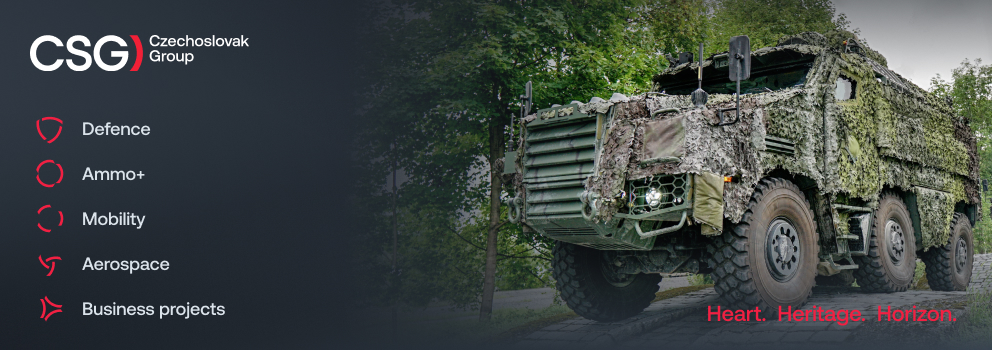Salvo rocket launchers: weapons with considerable destructiveness that still have something to offer
Which military systems are effective and have a future? This important question is now being addressed by rich and technologically advanced countries. Modern military equipment costs considerable money and therefore it is necessary to consider how to meet the objectives of building up the armed forces while putting the least possible strain on the state budget. However, it is not always expedient and economical to get rid of some of the significant capabilities of the Armed Forces, either for financial reasons or because of a favourable security situation. It is then much more costly to restore a given capability than to maintain it continuously, albeit in a temporarily reduced scope. The following article describes the capabilities and options for the use of rocket launchers in recent times. This capability was lost to the Army in 2010 with the retirement of the 122mm RM vz. 70 rocket launchers, but the current conflicts confirm the prospects for the development and use of these assets.

Salvo rocket launchers still represent a significant destruction capability, and with the increasing demands for destructiveness, accuracy and speed of strike, these weapons will continue to be a very effective means in the future. This will be achieved primarily through the development of munitions and, in particular, their guidance devices. In addition to the use of more sophisticated cruise missiles (CMMs), cheaper missiles with a significant area-destructive effect will continue to be available, not least through the use of containerised or thermobaric munitions (the detonation of a dispersed explosive aerosol produces an explosion that is approximately twice as powerful as that of conventional munitions, with the temperature at the epicentre of the explosion of thermobaric munitions reaching 800 °C). Thermobaric munitions can also be used to clear large areas due to overpressure.
Due to the possibility of using different types of RCS or missiles, the rocket launcher is a very versatile modular device. For example, the Israeli company IMI offers the Lynx rocket launcher, which can launch CRS/missiles of different calibre.
With the current and especially future extensive sensor coverage of the potential battlefield, the rapid launch of precision-guided munitions and the subsequent change of firing posture becomes important. During the change of firing position, in addition to ammunition replenishment, the fire control system will continue to process and input data so that the new firing position can be immediately engaged.
The use of rocket launchers, particularly of higher calibre, may slow or temporarily halt the enemy's advance depending on the composition of the enemy's formation. One can also imagine the destruction of a bridgehead by a single rocket launcher salvo using precision-guided munitions. In the context of a Weapon of Substantial Destruction, combining multiple types of interchangeable munitions (including munitions containing anti-tank or anti-personnel mines) offers the possibility of simultaneously destroying different types of adversary assets. In addition to its destructive effect, remote minelaying also has a significant moral impact on attacking forces.
Anti-tank (anti-infantry, mixed) minefields established remotely can be used effectively in front of an advancing adversary, especially his tanks and BVP. In connection with the use of anti-personnel mines, it should be mentioned that the Czech Republic, along with more than 100 countries, signed the Ottawa Convention (3 December 1997), which prohibits their use. However, the Convention has not been signed by the USA, Russia, China, India, Pakistan, Israel and some other states. Of course, from a military point of view, anti-personnel mines are a very cheap and effective means of supplementing mainly defensive measures. Matching the setting up of explosive and non-explosive barricades with the firing, especially of artillery assets, is an important aspect of conducting combat operations.
In a surprise attack, the adversary may be so affected (paralyzed) by these artillery assets that it will allow the defending side to gain the necessary time to defend and take further measures. Surprise use of rocket launchers can also be achieved by their covert deployment and remote control, which applies to both stationary and mobile autonomous rocket launcher systems. In addition to reducing de-masking symptoms, this solution also reduces or completely eliminates the vulnerability of operators.
The modularity of the system will play an important role for the use of rocket launchers. A significant advantage will be the possibility to implement this weapon system on different platforms (wheeled/tracked chassis, containerised solution in terms of transport - possibility of use not only in road, rail, air and sea transport). Placing it in a container provides a degree of protection from detection, which will contribute to covert movement. Containers, similar to those for the transport of goods, can resemble conventional trucks together with the transport vehicle or can be 'lost' (camouflaged) on railway wagons or ships.
And what else can we expect from rocket launchers? In addition to various types of combat munitions and anti-tank (anti-personnel mines), we can expect to see the rocket launchers' potential expanded to include the ability to launch unmanned aerial vehicles (UAVs) with various missions (reconnaissance, combat, jamming, deception, etc.). By mass launching these UAVs, it will be possible to create swarms of these vehicles with the ability to share information with each other. It will be possible to use them to perform various combat tasks, such as overcoming the adversary's air defense systems, attacking airfields and airborne equipment located on them, destroying command and control sites and other important elements of the combat formation.
However, even with rocket launchers, the effectiveness of their deployment will depend on fire coordination, information sharing, and connectivity (cooperation) with other elements of the force. A prerequisite for the use of artillery is the introduction of a unified fire control system, which would link all artillery fire assets, i.e. in the case of the Czech Armed Forces currently only howitzers and mortars. If the rocket launcher systems are equipped with inertial navigation systems and GPS, they are able to fire and manoeuvre in the areas of firing positions within a short time frame.
UAVs are increasingly being used to provide relevant battlefield information. This capability is already routinely possessed by modern fire control systems and, together with artillery radars, they represent the imaginary eyes for the conduct of artillery fire, especially fire guidance. In some cases they are an integral part of the fire control system. Thanks to the UAV's sensor equipment, in addition to target detection, fire correction can be carried out based on battlefield situation monitoring and artillery munitions impact assessment. Conducting an armed conflict will become an increasingly costly affair and it will be important for the attacker to decide the conflict in his favour in the shortest possible time. Among the decisive factors will be the quality of the weaponry of both sides, in addition to surprise and rapid deployment. Weapon systems with a significant destructive effect will play an important role in this case. Intense and rapidly available fire support will have a significant impact on the fulfilment of the armed forces' combat tasks. The effectiveness of the use of rocket-propelled grenades can be seen from the experience of fighting in Chechnya, Syria, Iraq and Ukraine. Precision-guided, long-range cruise missiles, which can be fired from, for example, the US HIMARS rocket launcher, are one of the options available to the Ukrainian army to deal significant blows to Russia at the moment. The short preparation for firing, the high manoeuvrability in the field and the increasingly sophisticated ammunition (higher range, destructiveness, accuracy of hit) give rocket launchers considerable advantages. In relation to the effect of the munitions used and the way they are fired, rocket launchers will have an increasingly destructive potential and will continue to represent a significant deterrent.






















